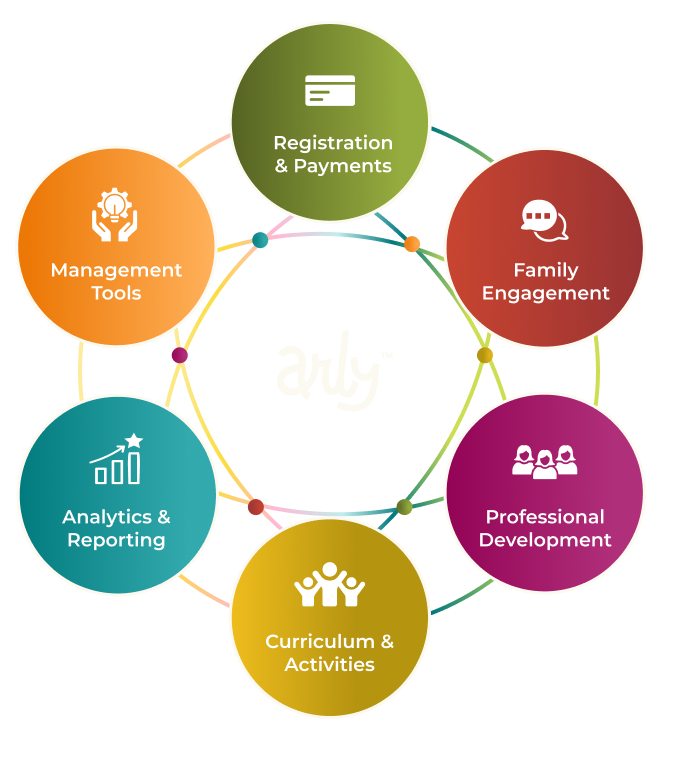7 Tricks Every YMCA and Afterschool Program Should Have Up Their Sleeve
By Arly Communications on March 2, 2023
Exceptional youth programs may seem downright magical—but there’s no wizard hiding behind a curtain. If you’re looking for ways to enhance your program and increase your impact, you don’t need a magic fix—just a few tricks up your sleeve to help you get there.
1. Proactive Planning
Early, robust program planning sets you up for success, ensuring every aspect of your youth program has been thoughtfully considered. When conducting proactive planning, start by identifying your program goals. Determine exactly what outcomes you want your program to deliver by setting goals that are specific, measurable, attainable, realistic, and timely (SMART).
You should also start early with planning your program’s budget, schedule, recruitment, curriculum, and communications. All of this work behind the scenes makes for a program that runs smoothly from Day 1.
2. Online Enrollment
The enrollment process can be messy and complicated, or it can be smooth and efficient. Give families a positive first impression and set yourself up for success by ensuring it’s the latter. You can do that through online enrollment. Keeping registration online simplifies the process for everyone involved, including family members and program staff.
Offering online enrollment also gives you the opportunity to collect essential data on the kids joining your program and house it all in one central location. Think of the system as your lovely assistant, always ready to provide essential data on participants’ health, education, authorized pickups, contact info, and more!
3. Engaging Enrichment
Having the right practical tools in place can free you up to focus on where the magic truly lies for kids and families: fun and engaging programming. Plan activities that increase impact and motivate high attendance and participation.
For example, field trips, crafts, and games are all great ways to engage kiddos while fostering a love of learning and offering meaningful enrichment opportunities.
4. Staff Development
When kids and families think of your program, what will they picture? In all likelihood, it will be the friendly faces who make your program possible. Awesome coaches, teachers, volunteers—they’re the ones who keep kids spellbound and excited to learn.
Investing in your team members is essential for establishing a strong foundation and positive culture that keeps kids coming back. That’s why you should not only develop strong recruitment and onboarding strategies but also offer professional development opportunities for your team. Provide opportunities for staff to learn and grow at their own pace.
5. Family Engagement
Youth programs aren’t just about kids; they’re valuable to whole families and communities. So be sure to share the magic with everyone involved. Engaging family members helps get them excited about your program and increases the chance they’ll want to return. Plus, families publicly applauding your program increases community awareness.
A communication app for youth programs will help you build connections with parents and guardians to strengthen family engagement. Share photos, post announcements, and send and reply to direct messages—whatever helps you keep families in the know.
6. Local Partnerships
Local school and community partnerships are a pillar of success for youth programs, helping directors bring their mission to life and expand their reach. You can form meaningful partnerships with various organizations, including school districts, public libraries, parks and recreation departments, nonprofits, and more.
Partnerships can also help you fund your youth program. Financial backing from schools or other community stakeholders can keep your budget from getting sawed in half or doing a disappearing act! Instead, you’ll get to hire more staff, purchase more materials, or otherwise improve the quality of your programming for the benefit of kids and families.
7. Measurable Reporting
Successful youth programs recognize the importance of tracking and analyzing the right metrics to continuously adapt and enhance your efforts. See how effectively you’re meeting your goals and what sort of impact you’re having on kids and the community. Example metrics include average daily attendance, number of children served, hours of professional development, and program satisfaction.
Measuring data before, during, and after your program is essential not just to you but to partners and stakeholders, as well. Measurable reporting is a requirement for some grants, and even when it’s not, it can help you demonstrate your value. See the good you’re doing and take a bow!
Do You Believe in Magic?
Successful youth programs are ones that positively engage kids, families, staff, and the community at large. A lot has to happen behind the scenes to make that ideal a reality.
At Arly, we understand all that goes into a successful youth program, and we’re a partner you can trust to streamline and support these efforts. Our comprehensive software solution feels a little bit like magic to busy youth programmers who are used to juggling multiple solutions or analog processes.
We also support youth programmers with free resources. Download our Youth Programmers Checklist.






%20(45).png)

%20(1320%20x%20980%20px)%20(660%20x%20490%20px)%20(600%20x%20350%20px)%20(2).png)

%20(64).png)